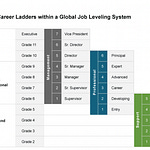Former Atlassian CTO Sri Viswanath shares his lessons on engineering leadership, such as aligning goals, handling difficult situations, and optimizing team metrics. Jason, Eiso and Sri talk about their experiences with system failures and the importance of technical mentors and CTOs in promoting better leadership.
💬 A few of our favorite moments from the chat
You have to have a lot in you as a person, but you don't have to have everything in you, because nobody does. Nobody is perfect coming out of the womb, coming out of high school, coming out of college or dropping out of Stanford, you have to continue to learn.
If you look at it as a CTO, you need to think about multiple dimensions of things. You need to think about people, growing the team, hiring, firing, promotions, mentoring, organizing, culture, people. All those aspects. Second is product, you need to care about customers, you need to deliver, you need to have a roadmap. And then the technology and the platform, how you will build things. And for each of these, you also need to think about the vision, you need to have a strategy for execution and then the actual execution.
It's easy to find leaders who have done something, but hiring a leader who has all the skills that we talked about and can work in a new culture that they come into and be very effective and liked by all the different 360, not an easy thing. And it's actually rare to find and those are unicorns and you need to hold on to them.
If you're in the executive room, you've got to understand what your team is, there's this concept of "first team" that's out there and stuff. If you're an executive, you're a company executive, not a functional executive. You happen to run engineering or sales or whatever, but you have to be oriented towards the company.
💡 Topic Explainers
🧠 Training The Neural Net
A neural net is a term used to refer to a type of artificial intelligence that's modeled after the structure and function of the human brain. Essentially, it's a network of interconnected nodes, or artificial neurons, that are designed to process and interpret complex information.
In the context of building an organization, Jason likes to call it "training the neural net", when he refers to teaching employees to think and operate in a specific way that aligns with the organization's goals and values.
Instead of providing answers, this approach involves giving employees the inputs and frameworks they need to arrive at their own solutions, which can lead to greater success and growth for the organization.
🥇 First-team and Second-team mode
First-team and Second-team mode are about a leader's mindset towards their team and executive group.
First-team mode means prioritizing the executive team and working towards common goals. Second-team mode can create conflicts between departments and lack of purpose in the organization.
In simple terms, leaders need to treat the executive team as their primary team, and their function as secondary, to create a healthy organizational culture.
Jason goes deeper into this idea on:
> Episode 2: The Growing Pains of Company Culture
> Episode 4: Rethinking Your Role as a Leader with Emil Eifrem from Neo4j
Developing Leadership is powered by Athenian. We are introducing a winning approach to engineering metrics that can help you empower your teams to autonomously improve. If you want to learn more, go to athenian.com











